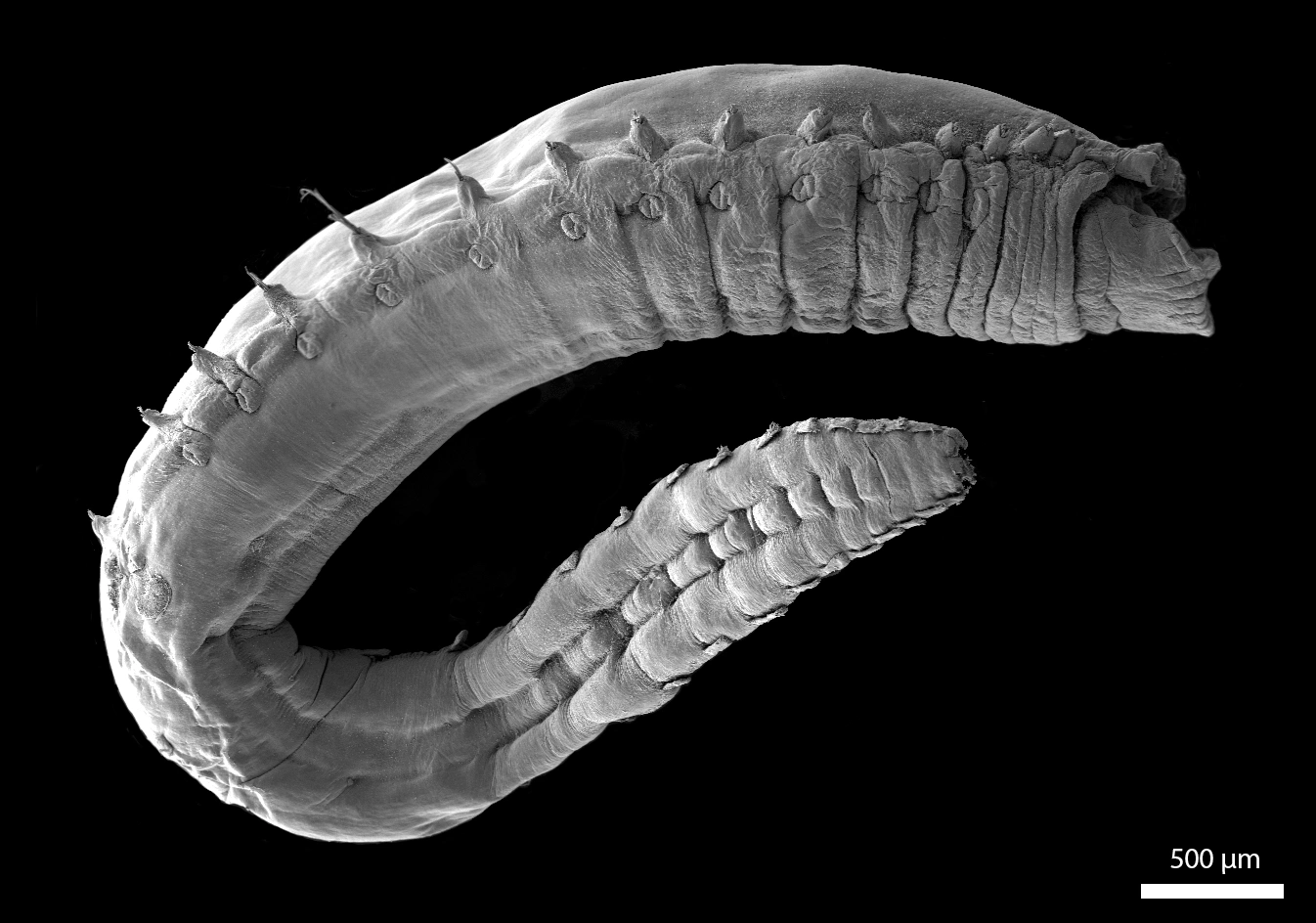Lysippe labiata
Lysippe labiata can be up to 33 mm long. It can be found in the Barents Sea, around Svalbard and northern Norwegian coast possible as far south as Møre at depths between 14 and 400 meters.
Type locality
Spitsbergen, Svalbard (Haklyts Headland (Hakluytodden?), Kingsbay (Kongsfjorden?), Safehavn (Trygghavna?) and Storfjorden), 50–90 m.
Key characters
Lysippe labiata. Anterior end. br: branchiae (branchial scars), lwl: lower lip, pr: prostomium.
Uncini from abdominal neuropodium
Measurements: Up to 33 mm long.
Number of thoracic chaetigers, excluding paleae: 16
Number of thoracic uncinigers: 13
Number of abdominal uncinigers: 14–15.
Prostomium: Trilobed; one pair of eyespots.
Mouth tentacles: Smooth.
Branchiae: Four pairs of branchiae in two groups slightly separated at mid-dorsum; branchiae in each group in transverse row.
Paleae: Small with filiform tips.
Special features: Very large lower lip.
Pygidium: With two lateral cirri.
Tube: Thin layer of organic secretion incrusted with few sand grains.
Distribution
Barents Sea, Svalbard, northern Norwegian coast, possible as far south as Møre; 14–395 m (Jirkov 2001).
Similar species
The very large lower lip, in combination with presence of paleae and long abdomen (14–15 uncinigers), makes it unlikely to confuse adult complete specimens of Lysippe labiata with any other Ampharetidae in Norwegian waters.
Sources
Holthe T (1986a). Polychaeta Terebellomorpha. Marine Invertebrates of Scandinavia 7: 1-192.
Jirkov IA (2001). [Polychaeta of the Arctic Ocean] (In Russian). Polikhety severnogo Ledovitogo Okeana. Yanus-K Press. Moscow, 632 pp.
Malmgren AJ (1866). Nordiska Hafs-Annulater. [part three of three]. Öfversigt af Königlich Vetenskapsakademiens förhandlingar, Stockholm 22(5): 355-410, plates XVIII-XXIX. https://biodiversitylibrary.org/page/32339631
Personal observations, Alvestad T.
Thoracic neuropodium with uncini
Siden siteres som:
Alvestad T og Budaeva N (2020). Lysippe labiata Malmgren, 1866. www.artsdatabanken.no/Pages/299317. Nedlastet <dag/måned/år>



